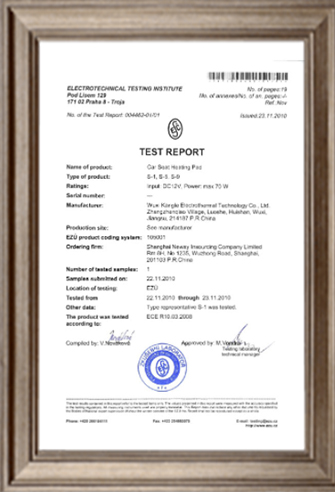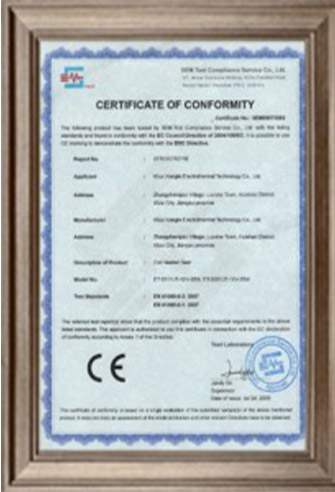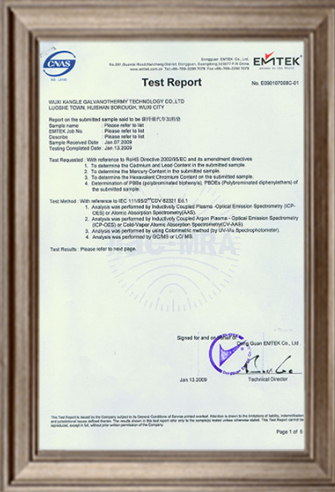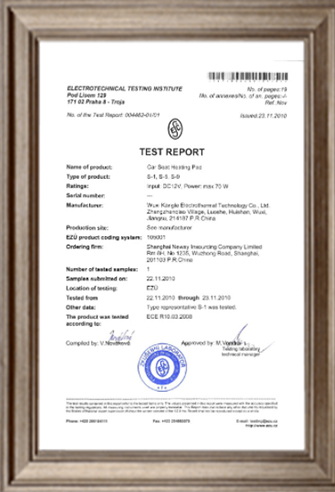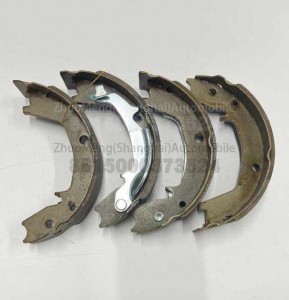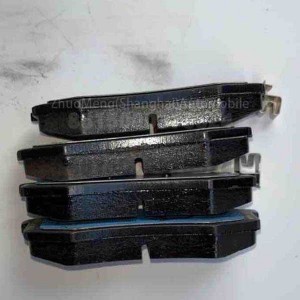Front brake pads or rear brake pads which wear faster.
Front brake pads
Front brake pads usually wear out faster than rear brake pads. The reasons for this phenomenon can be explained from the following aspects:
Vehicle design and drive: Most modern cars have a front-engined front-wheel drive design, which means that the front wheels are not only responsible for driving, but also provide steering force when turning. Therefore, the front brake pads bear greater responsibility and higher frequency of use in use, resulting in a faster wear rate.
Vehicle weight distribution: During braking, the weight of the vehicle is transferred to the front wheels, increasing the friction between the front wheels and the ground, which makes it easier for the front wheels to slow down. This suggests that, in theory, the front brake pads should wear out faster.
Driving habits and road conditions: Frequent use of brakes or driving on slippery surfaces can cause brake pads to wear out faster. These factors may affect the front and rear brake pads differently, but usually the front brake pads wear out faster because they are used more frequently.
Maintenance and maintenance: If the front brake pads of the vehicle are not properly maintained and maintained, such as not replacing the brake pads or adjusting the brake system in a timely manner, this may cause the front brake pads to wear out faster.
In summary, although the rear brake pads may wear out faster in some specific situations (such as rear-wheel drive vehicles) due to greater frequency of use and force, the front brake pads usually wear out faster in most front-wheel drive vehicles. This is because the front wheels are not only responsible for driving, but also bear greater weight transfer and friction when braking, causing them to wear faster than the rear brake pads.
It is necessary to replace the front and rear brake pads together
It isn't necessary
The front and rear brake pads do not need to be replaced together.
This is because there is a difference in the replacement cycle of the front and rear brake pads, and the front brake pads usually wear faster than the rear brake pads, so they need to be replaced more frequently. Under normal circumstances, the front brake pads need to be replaced when traveling about 30,000 to 50,000 kilometers, and the rear brake pads can be replaced after traveling 60,000 to 100,000 kilometers. In addition, when replacing the brake pads, it is recommended to replace the brake pads on both sides of the coaxial at the same time to ensure that the braking effect on both sides is consistent. This ensures the balance and safety of the brake system.
How worn are the brake pads to be replaced?
01
Less than 3mm
Brake pads wear to less than 3mm need to be replaced. When the brake pad thickness is reduced to one-third or less of the original thickness, this is a clear signal that the brake pad has worn to the point where it needs to be replaced. In addition, advanced models are usually equipped with brake pad wear warning lights, when the warning light is on, it is also a signal to remind the need to replace the brake pad. In order to ensure driving safety, when the thickness of the brake pads is observed to be reduced to 3.5 mm or less, it should be replaced immediately.
02
The braking effect will be significantly reduced
Brake pads wear to a certain extent will lead to a significant reduction in braking effect. When the brake pad is seriously worn, its braking ability will be significantly weakened, and even cracks may appear, further affecting the braking effect. In general, the replacement cycle of the front brake pads is about 30,000 kilometers, and the rear brake pads may reach 60,000 kilometers. However, these values will vary depending on vehicle type and driving habits. Especially in congested urban driving, brake pads wear faster. Therefore, once the braking effect is found to decline, the brake pads should be replaced in time to ensure driving safety.
03
Thickness less than 5mm
When the brake pad is worn to a thickness of less than 5mm, it should be replaced. The new brake pad thickness is about 1.5cm, but during use, its thickness will gradually decrease. When the thickness drops to 2 to 3mm, it is usually considered a critical point. If the driver feels the brake pedal light or brake hard, this may also be a signal of insufficient brake pad thickness. Usually, the brake pads are checked during each maintenance and are considered for replacement when traveling about 60,000 kilometers. However, the actual replacement time should be determined according to the use and driving habits.
04
Twenty, thirty thousand kilometers
Brake pads wear to twenty or thirty thousand kilometers, usually need to be replaced. Brake pads are a very important part of the automobile brake system, and their wear degree directly affects the braking efficiency of the vehicle. When the driving mileage reaches twenty to thirty thousand kilometers, the brake pads usually have obvious wear, which may reduce the braking performance of the vehicle, increase the braking distance, and may even affect driving safety. Therefore, in order to ensure driving safety, it is recommended to check and consider replacing the brake pads at this mileage.
05
About 30-60,000 kilometers
Brake pads wear to about 30-60,000 kilometers, usually need to be replaced. Brake pads are a very important part of the automobile brake system, and their wear degree directly affects the braking efficiency of the vehicle. When the wear reaches 30,000 kilometers, it may be close to the limit of its service life, and the replacement can ensure driving safety at this time. To 60,000 kilometers, the brake pads may have been unable to provide enough braking force, increasing the risk of driving. Therefore, in order to ensure driving safety, it is recommended to replace the brake pads in time within this range.
If you want to know more, keep reading the other articles on this site!
Please call us if you need such products.
Zhuo Meng Shanghai Auto Co., Ltd. is committed to selling MG&MAUXS auto parts welcome to buy.


